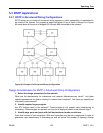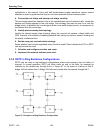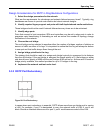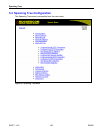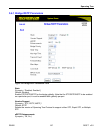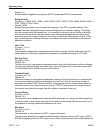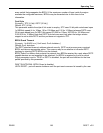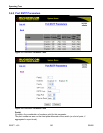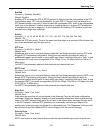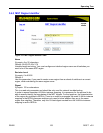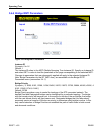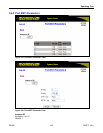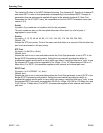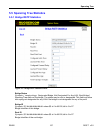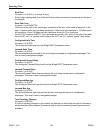
Spanning Tree
RS400 151 ROS™ v3.5
Enabled
Synopsis: { Disabled, Enabled }
Default: Enabled
Enabling STP activates the STP or RSTP protocol for this port per the configuration in the STP
Configuration menu. STP may be disabled for the port ONLY if the port does not attach to an
STP enabled bridge in any way. Failure to meet this requirement WILL result in an undetectable
traffic loop in the network. A better alternative to disabling the port is to leave STP enabled but
to configure the port as an edge port. A good candidate for disabling STP would be a port that
services only a single host computer.
Priority
Synopsis: { 0, 16, 32, 48, 64, 80, 96, 112, 128, 144, 160, 176, 194, 208, 224, 240 }
Default: 128
Selects the STP port priority. Ports of the same cost that attach to a common LAN will select the
port to be used based upon the port priority.
STP Cost
Synopsis: 0 to 65535 or { Auto }
Default: Auto
Selects the cost to use in cost calculations, when the Cost Style parameter is set to STP in the
Bridge RSTP Parameters configuration. Setting the cost manually provides the ability to
preferentially select specific ports to carry traffic over others. Leave this field set to "auto" to use
the standard STP port costs as negotiated (4 for 1Gbps, 19 for 100 Mbps links and 100 for 10
Mbps links).
For MSTP, this parameter applies to both external and internal path cost.
RSTP Cost
Synopsis: 0 to 2147483647 or { Auto }
Default: Auto
Selects the cost to use in cost calculations, when the Cost Style parameter is set to RSTP in the
Bridge RSTP Parameters configuration. Setting the cost manually provides the ability to
preferentially select specific ports to carry traffic over others. Leave this field set to "auto" to use
the standard RSTP port costs as negotiated (20,000 for 1Gbps, 200,000 for 100 Mbps links and
2,000,000 for 10 Mbps links).
For MSTP, this parameter applies to both external and internal path cost.
Edge Port
Synopsis: { False, True, Auto }
Default: Auto
Edge ports are ports that do not participate in the Spanning Tree, but still send configuration
messages. Edge ports transition directly to frame forwarding without any listening and learning
delays. The MAC tables of Edge ports do not need to be flushed when topology changes occur
in the STP network. Unlike an STP disabled port, accidentally connecting an edge port to
another port in the spanning tree will result in a detectable loop. The "Edgeness" of the port will
be switched off and the standard RSTP rules will apply (until the next link outage).
Point to Point
Synopsis: { False, True, Auto }
Default: Auto
RSTP uses a peer to peer protocol that provides for rapid transitioning on point-to-point links.



